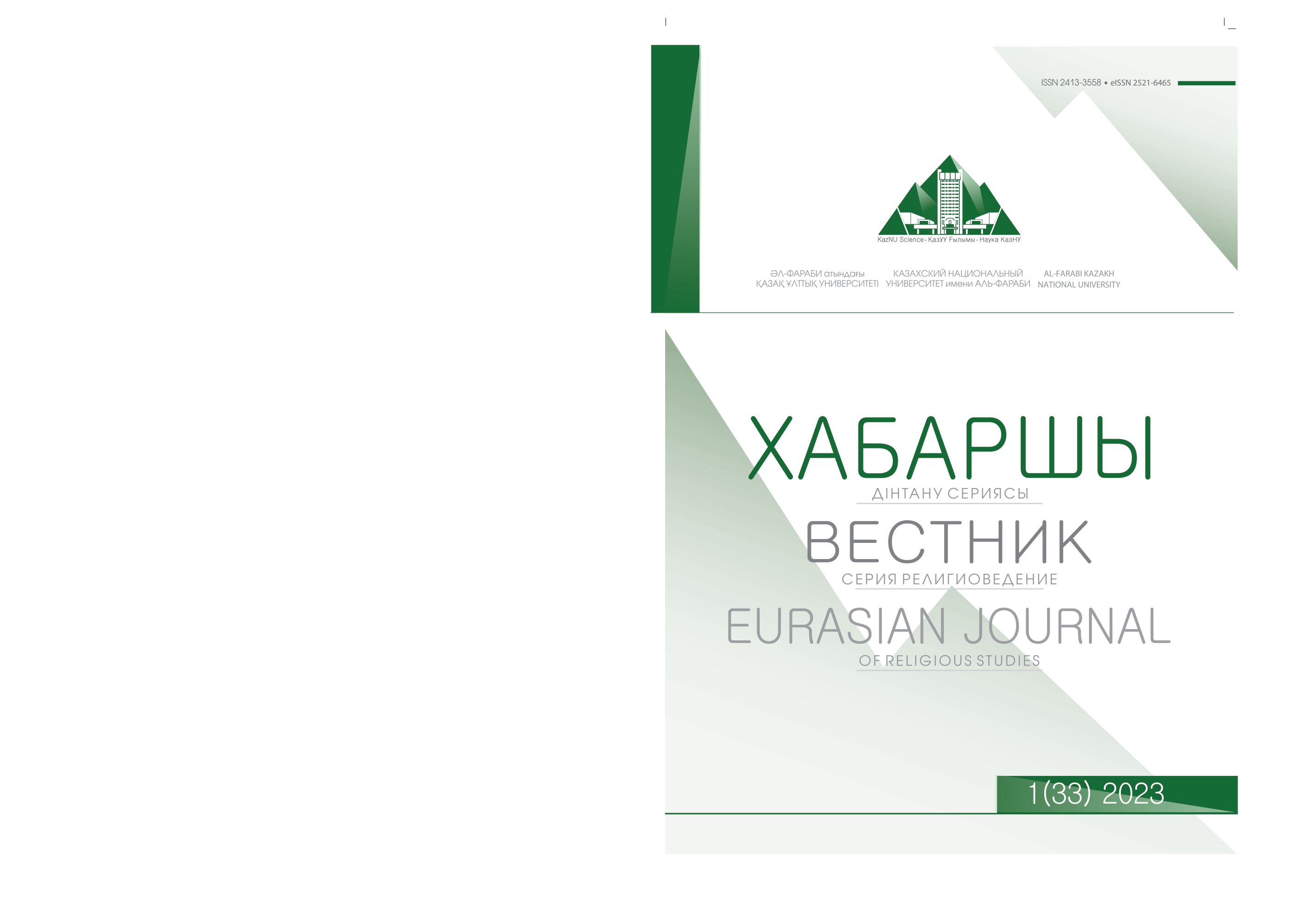Pluralism in Future Cities of Kazakhstan as a Projection of the Idea of Virtuous Society
DOI:
https://doi.org/10.26577//EJRS.2023.v33.i1.r2Abstract
Public places are significant urban elements that offer a positive impact to the quality life of the citizens. A good city is always receptive, inclusive and meaningful. They are the important ingredients of a successful, benevolent city that helps to build a sense of community, civic identity, culture, and community revitalization. At the same time, it is the very place, which acts as a catalyst in uniting the segregated diverse group of local community while it could also be a platform in engaging with the global community when it acts as a major gathering spot. Due to lack of research done in the area of planning cities in regards to becoming a vital tool in promoting pluralism; tensions and segregations within the communities are being overlooked easily as of only political, religious or social concern. It can therefore damage the public goods such as liberty, equality or justice, which will result in decelerating the country’s development. There is an urgent need to revive the true essence of people-centered city planning especially in the area of designing cities. In the studies of (i) placemaking, (ii) designing public places emphasizing on inclusive urban management and social planning strategies, (iii) planning cities with more profound reflection on urban segregation, exclusion, social hierarchies, and inequalities; this paper address the need to introduce pluralism in planning future cities of Kazakhstan. Expected findings will become a vital tool in connecting people and generating peace and pluralism for future cities.
Keywords: Future Cities, Virtuous City, Perfect Societies, Public Places, Kazakhstan and Pluralism
References
Ali, Ishraq and Qin, Mingli (2019) “Distinguishing the Virtuous City of Al-Farabi from That of Plato in Light of His Unique Historical Context.” HTS Teologiese Studies / Theological Studies 75 (4).
Altayeva, N. A. and K. A. Zatov (2017) Mormon Church in Kazakhstan. https://www.globalmediajournal.com/open-access/mormon-church-in-kazakhstan.php?aid=87283
Arapoglou, V. P. (2012) “Diversity, Inequality and Urban Change.” European Urban and Regional Studies 19: 223–37.
Friedmann, John (2016) “Place and Place-Making in Cities: A Global Perspective.” Readings in Planning Theory: Fourth Edition 9357: 503–23.
Gehl, Jan (2010) Cities for People. Washington, Covelo. – London: Island Press. – 288.
Gordon, E. W. (1999). Education and Justice: A View from the Back of the Bus. Teachers College Press.
Haque, M. S. (2003) “The Role of the State in Managing Ethnic Tensions in Malaysia: A Critical Discourse.” American Behavioral Scientist 47(3): 240–66.
Harrison, Stevew and Dourish, Paul (1996) “Re-Place-Ing Space: The Roles of Place and Space in Collaborative Systems.” Computer Supported Cooperative Work 7: 67–76.
Jacobs, Jane (1961) “The Death and Life of Great American Cities.” Vintage Books Edition 84: 487–92.
Kennedy-Dubourdieu, Elaine (2006) Race and Inequality: World Perspectives on Affirmative Action. Hampshire, England: Ashgate Publishing Limited. – 216.
Kudaibergenov, S. E., Ismagambetova, Z. N. and Abirova, B. I. (2018) “Architectural Importance of the Ahmed Yassawi Memorial-Complex Important Moral, Patriotic Value for the People of Kazakhstan. Objects Such as the Khoja Ahmed Yassawi Mausoleum, Objects of the Altai Territory, Southern and Western Kazakhstan Are Now Kn.” №1 (17): 29–36.
Lassman, Peter (2011) Pluralism. – Cambridge, U.K.: Polity Press. – 320.
Mohd Isa, Norliza (2011) “Cities Design and Planning with People’ S Perception Consideration: A Methodology to Elicit the Perseptions of Experts on the Meaning of Islamic Built Environment in Malaysia.” Journal Cities and Planning with People’s Perception Consideration (2): 1–14.
Salama, Ashraf M. (2017) “Plurality and Diversity in Architectural and Urban.” 11(2): 1–6.
Sandel, Michael J. (2013) What Money Can’t Buy: The Moral Limits of Markets. – NY, Farrar, Straus and Giroux. – 36.
Schnell, Izhak and Baruch a. Kipnis (1989) “Well-Being in a Pluralistic Society: Toward a Policy-Oriented Methodology.” Geoforum 20 (3): 303–13.
Seelye, H., Ned and Jacqueline Howell Wasilewski (1996) Between Cultures: Developing Self-Identity in a World of Diversity. – Illinois, U.S.A.: NTC Publishing Group. – 234.
Talen, E. (2006) “Design That Enables Diversity: The Complications of a Planning Ideal.” Journal of Planning Literature 20(3): 233–49.
Wyckoff, Mark A. (2014) “Definition of Placemaking: Four Different Types.” Planning & Zoning News. https://www.canr.msu.edu/uploads/375/65824/4typesplacemaking_pzn_wyckoff_january2014.pdf
Yusuf, Hamza (2017) “Pluralism in a Monoculture of Conformity,” Renevatio: The Journal of Zaytuna College. Dec. 15, 2017. https://renovatio.zaytuna.edu/article/pluralism-in-a-monoculture-of-conformity




